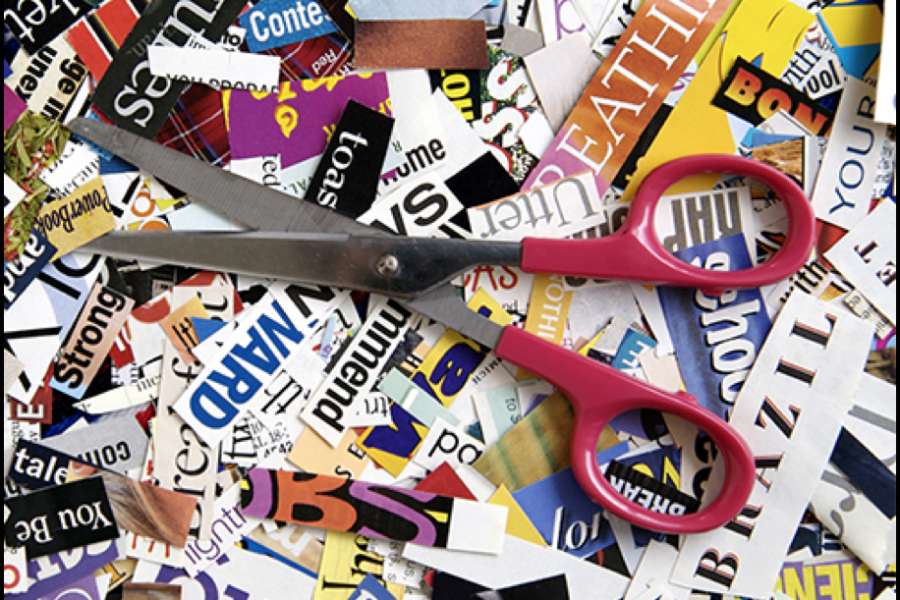
This is a tough time for us all, and many parents are struggling with what to do with their energetic kids when they’re home from school. It’s kind of like summer without all the activities to keep them entertained. We’ve got some great ideas to keep their minds engaged, stretch their imaginations, and sharpen those literacy skills while kids are home. Check these out, and let us know what fun literacy activities you’ve tried!
Headline Poems
Materials: Magazines and newspapers, scissors, glue, paper
Grades: 4-8
Prep Time: Low
Instructions: Instruct students to clip interesting words and phrases from the headlines in magazines and newspapers. The more the better; advise students to collect 50-75 words and phrases from different sections of their periodicals. Remind them to gather nouns, verbs, adjectives, and adverbs.
Next, instruct students to search their collections for themes, synonyms, rhyming words, etc. Arrange and rearrange the words and phrases and read aloud to check for fluency and impression.
When students are happy with their poems, have them paste them onto a blank sheet of paper.
Resources: https://teachmag.com/archives/5539
Dissection of a Protagonist
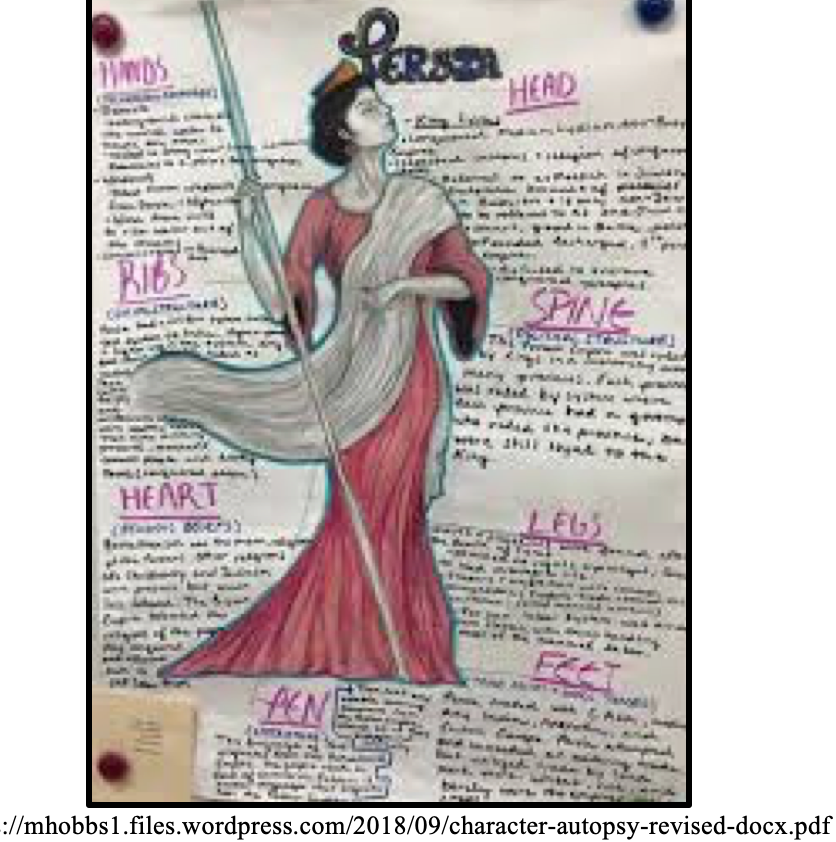
Materials: Novel or short story for character analysis study, paper, pencils/markers
Grades: 6-8
Prep Time: Low
Instructions: Use quotations or passages from a text to illustrate the following for a post-reading “autopsy” of a main character.
Head – What are the character’s dreams? Visions? Philosophies?
Eyes – What memorable sights affect him/her/them? How?
Ears – How is he/she/they affected by what he/she/they hears? By what others say?
Nose – Which smells affect him/her/them? How?
Mouth – What memorable arguments did the character make? What song lyrics would symbolize his/her/their philosophy of life?
Arms/Hands – What is the character’s relationship to work? How does he/she/they deal with conflict?
Heart – Whom/What does he/she/they love? How?
Torso – What does the character like/hide about him/her/theirself? What causes the character pain or fear?
Legs/Feet – What does the character do for fun? What are his/her/their avocations? Where has the character been (literally or figuratively)? How has he/she/they been affected by travel or setting?
Wings – What is the character’s future? Where is he/she/they going?
Resource: https://www.grant.keyschools.us/Downloads/Characterization.pdf
Itty Bitty Matchbox Books

Materials: Empty matchboxes, split pins, paper, pens and pencils, glue, scissors, collage materials (fabric scraps, beads, buttons, old print/music scores/maps, etc.)
Grades: 2-5
Prep Time: Moderate
Instructions: Begin with a blank piece of paper that’s around 3.75 in x 5 in or slightly smaller. Use a French fold technique (link below) to turn paper into a tiny book.
Think of a tiny main character for your book. Open up your folded paper and draw your character on the inside page. Re-fold your book so your hero is hidden inside the pages, so only you know they are there. Then, starting with a title page, fill the book pages with a tiny story about your character. Add extra interest by using different fonts, stamps, and illustrations.
To complete the project, decorate your matchbox book case using fabric, patterned paper and/or illustrations. Add a handle by poking a split pin through the front ‘drawer’ of the matchbox. Pop your mini storybook inside to keep it safe.
Resources: https://nurturestore.co.uk/literacy-and-art-ideas-incy-wincy-books-with-artist-becky-adams?utm; https://www.youtube.com/watch?v=mmPZlFBR6I8&feature
Paint Chip Word Families
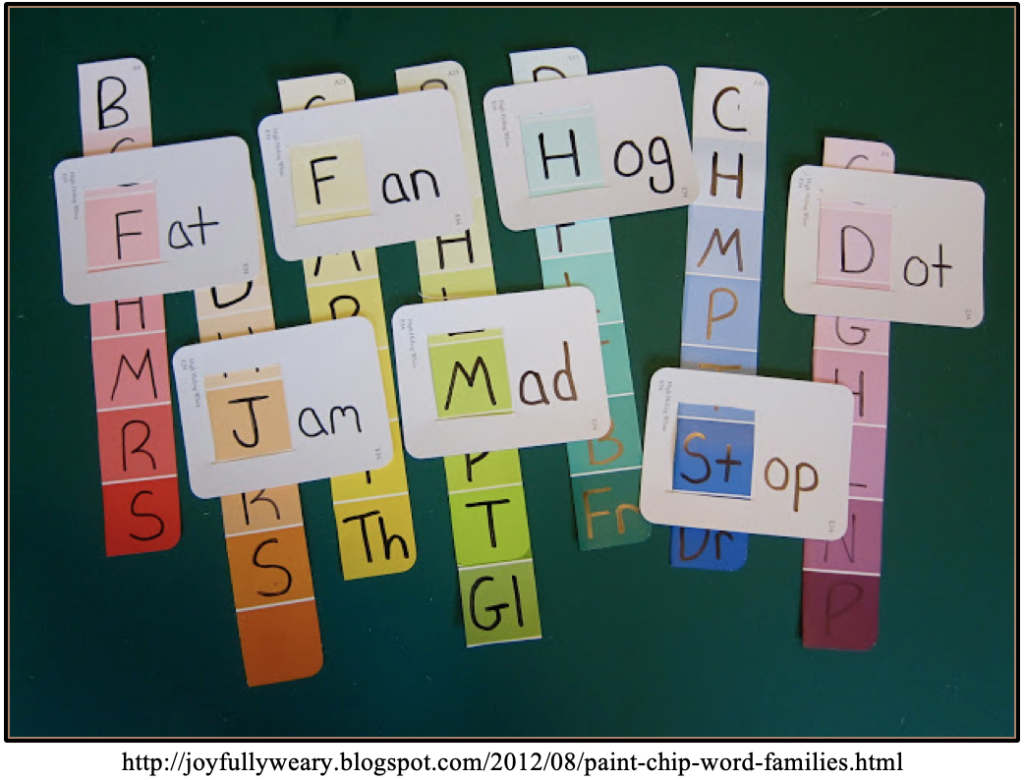
Materials: Large white paint chips, colorful paint chips, Sharpie, scissors, X-acto knife
Grades: K-2
Prep Time: Moderate
Instructions: If using wide colored paint chips, cut them in half lengthwise. Use a Sharpie to write letters in each color square.
Use the X-acto knife to cut two slits in each white paint-chip. Use colored paint chips as a guide to measure appropriate length and width. Use the Sharpie to write word families on the white paint chips.
Pull the colored strip through word family card and read!
Resources: http://joyfullyweary.blogspot.com/2012/08/paint-chip-word-families.html
Alphabet Dominoes
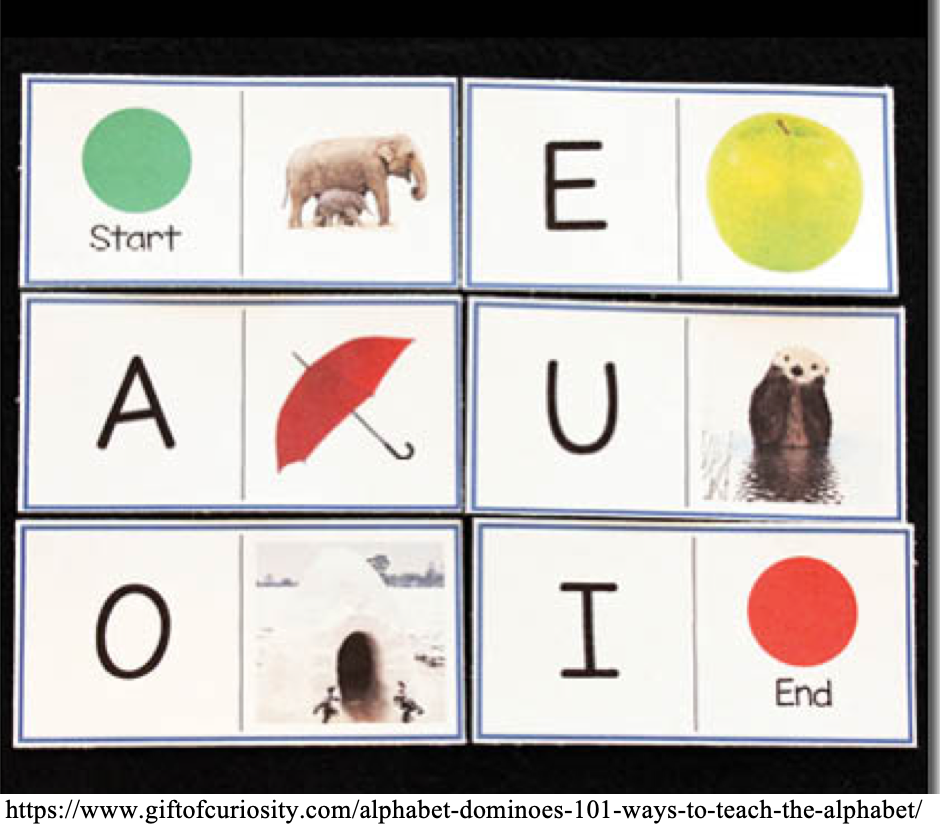
Materials: Alphabet Dominoes
Grades: PK-1
Prep Time: Low
Instructions: Make your own or print a set of Alphabet Dominoes (download two of seven sets free using the link below). Help students find the domino with a green “start” dot on it. This is the first domino students will lay down.
From here, help students identify the initial sound of the picture on the domino.
Once the child identifies the initial sound, he/she/they must find the domino featuring that letter and lay it next to the picture.
Students continue laying down dominoes until the final “end” domino – marked with a red dot – is reached.
Resources: https://www.giftofcuriosity.com/alphabet-dominoes-101-ways-to-teach-the-alphabet/
https://www.giftofcuriosity.com/product/alphabet-dominoes/ (free download)
Connect the Dots with Letters
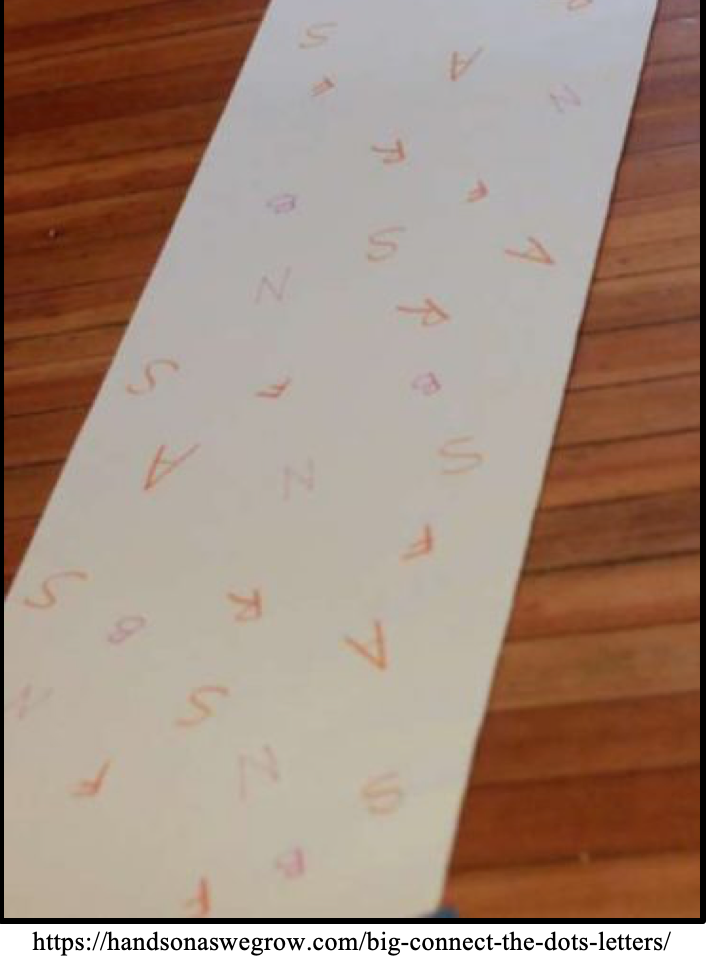
Materials: Butcher paper, markers or crayons
Grades: PK-K
Prep Time: Low
Instructions: Roll out a long piece of butcher paper. Write several letters of the alphabet on the paper, repeating each a number of times down the length of the paper.
Give the child a marker and ask him/her/them to draw a line connecting the letters that are the same. Encourage careful review to be sure no letters are missed.
Use a combination of letters the student knows and letters he/she/they may be struggling with. Use color as an additional clue to help beginners identify matching letters.
Resources: https://handsonaswegrow.com/big-connect-the-dots-letters/
Check our website for more fun literacy activities you can do at home!


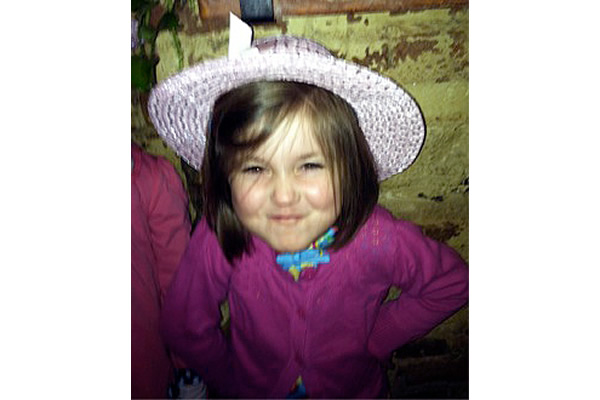

love these projects- already families are thirsty for new ideas.
Our neighborhood started a project Animals in Windows so families can walk around and check off spotted animals on an accompanying BINGO card.
We might do Books in Windows next (and maybe Art in Windows)…..
How cool! Thanks for sharing.